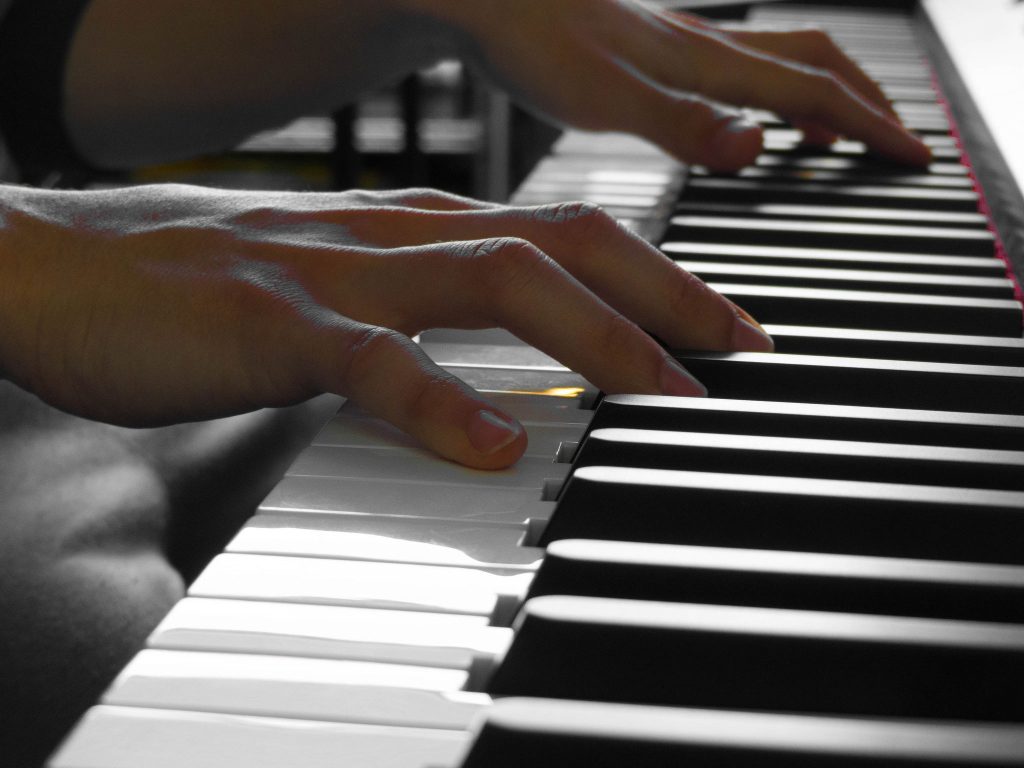In the TV series The Addams Family, Thing was a character in the form of a disembodied hand. It held (and lit) Gomez’s cigars, handed Morticia her knitting needles, and changed the channels on the family’s TV set.
As a kid, I sometimes imagined that my hands, too, had a life of their own. Around the time I was watching The Addams Family, I had been playing the piano for a few years and had started memorizing more complex pieces. I remember looking down at my hands as they danced across the keys. In these moments, the body seemed to take over and play without much conscious thought. I was very in-tune with this observation of myself and less preoccupied with controlling the hands and fingers.
These days, I don’t play the piano very often, but I still try to observe the body’s experience as much as possible. I practice anapanasati meditation, a method in which practitioners continuously observe the breath without actively changing it. However, in my practice, I sometimes find it very hard to watch the breath without controlling it.
While I sit, I tend to change the breath when I suspect that the body isn’t capable of naturally relieving the discomfort that I feel. When I experience tightness in the upper chest, for example, I take a much deeper inhale. Many teachers instruct practitioners to sit with curiosity and watch what arises without immediately trying to relieve uncomfortable sensations. This is a practice of discipline that encourages compassion and patience. Staying with the tension of a difficult thought or emotion reminds us that the experience will eventually pass.
Master Buddhist teacher Ringu Tulku Rinpoche wrote that the purpose of meditation is to uproot the defilements; in other words, we meditate to learn more about our “stuff.” When we become aware of what agitates us, saddens us, or infuriates us, we can practice sitting with it and eventually offer ourselves compassion.
On my more productive days, this seems possible. On days when I’m really struggling—or when a challenging emotion or thought arises—the tension and discomfort can be so intolerable that I have to move the body. With practice, though, these sensations and triggers have become more familiar. I’ve discovered that I can sit with them a bit longer each time before I step in.
My awareness of this tendency in meditation has helped me discover how this plays out in other areas of my life. I often struggle to decide whether I should hang back and observe a situation or step in and try to influence or control it. As part of my practice, I try to bring awareness to my conversations with friends and family and notice the extent to which I interject my advice and opinions. I’ve realized that I do this because listening to others can create discomfort, and jumping into the discussion is a way to release this tense energy. I also try to notice when I prematurely withdraw from tense situations because of discomfort or fear.
I’m not suggesting that we become martyrs and endure unnecessary pain and suffering. Nor am I implying that we should sit back as indifferent bystanders. I believe mindful acts of agency and activism remind us of our potential to bring about profound change. After all, we are not disembodied characters. The sensations we feel are genuine and permit us to communicate with others and experience deep connections. Observing these sensations and understanding our motivation can shed more light on our true intentions. With practice, I’ve learned that this process can help us shift out of discomfort and fear and position us to act from a place of kindness and courage.
Related: Choosing a Meditation Seat: Sitting cross-legged on the floor isn’t your only option
Access all Meditation Month content here
Thank you for subscribing to Tricycle! As a nonprofit, we depend on readers like you to keep Buddhist teachings and practices widely available.
